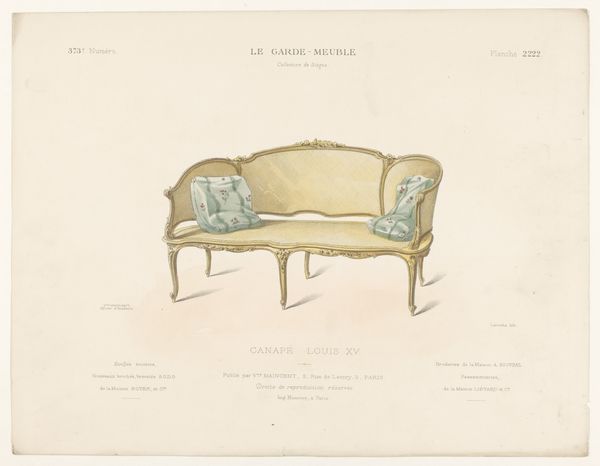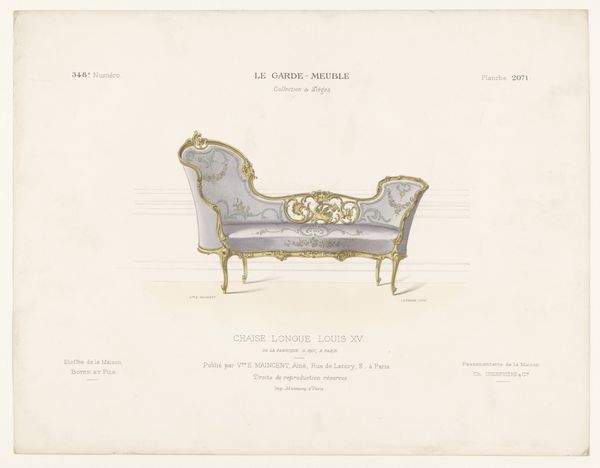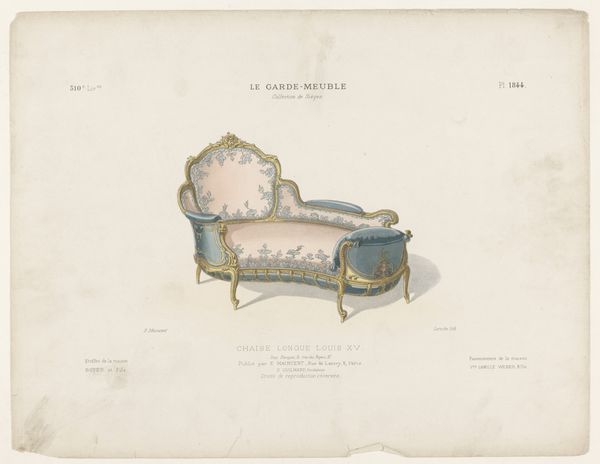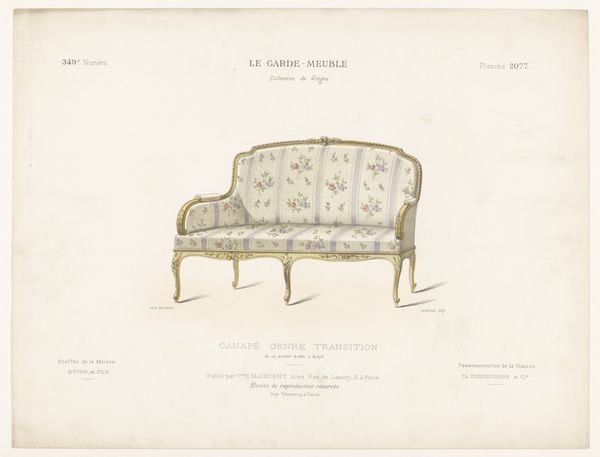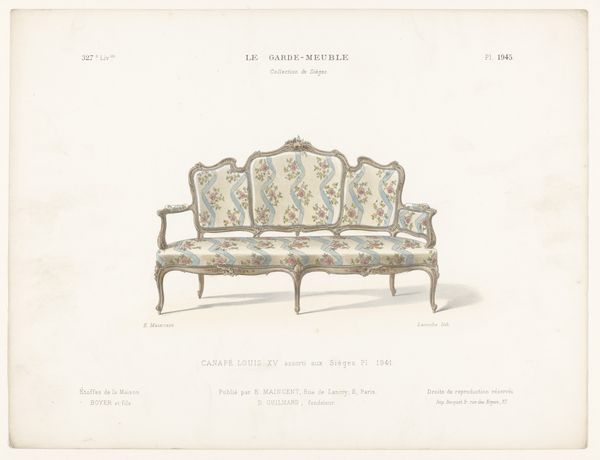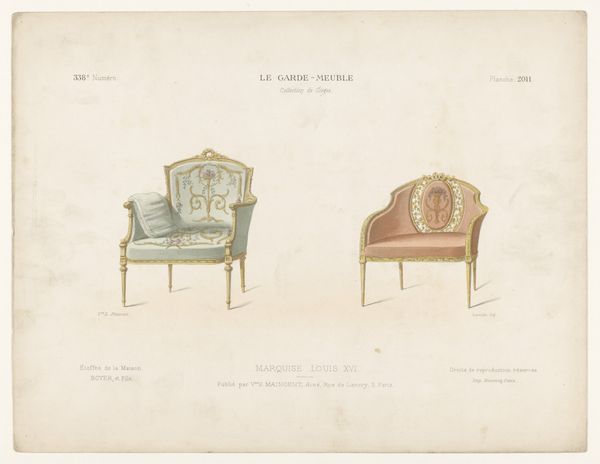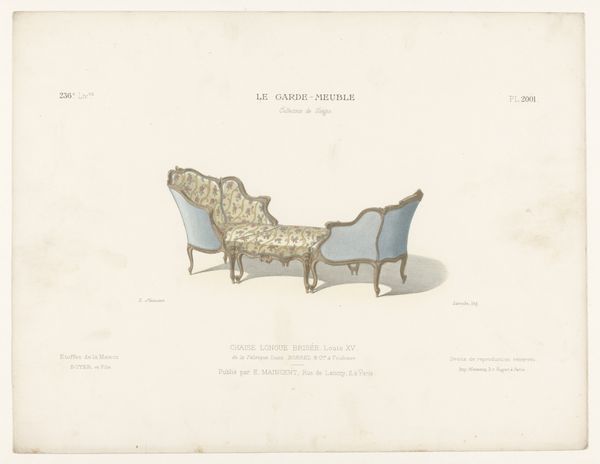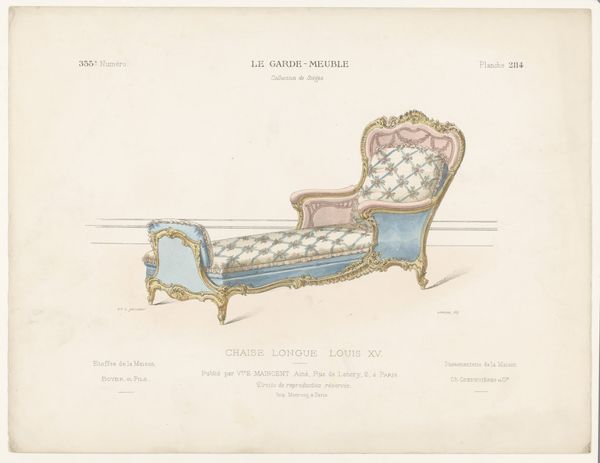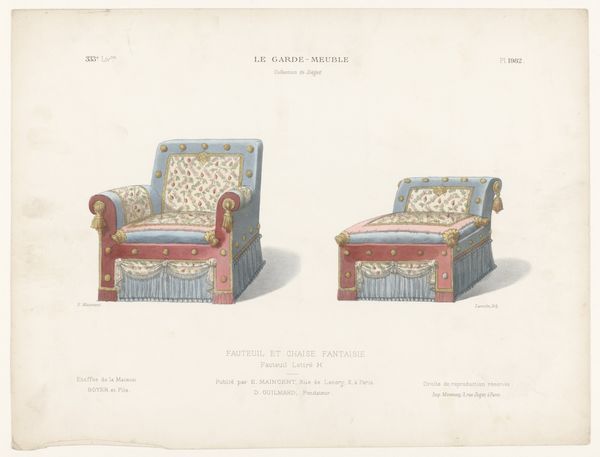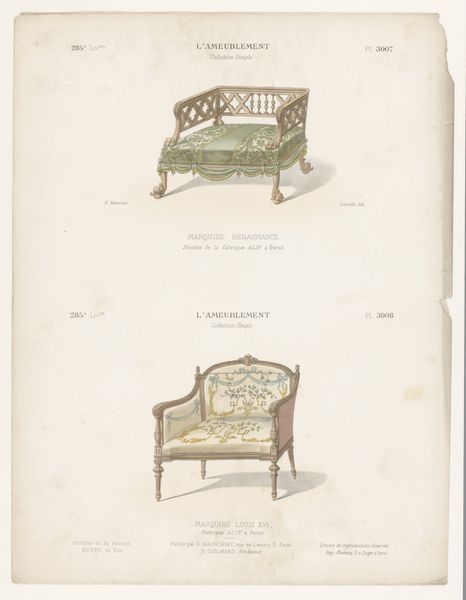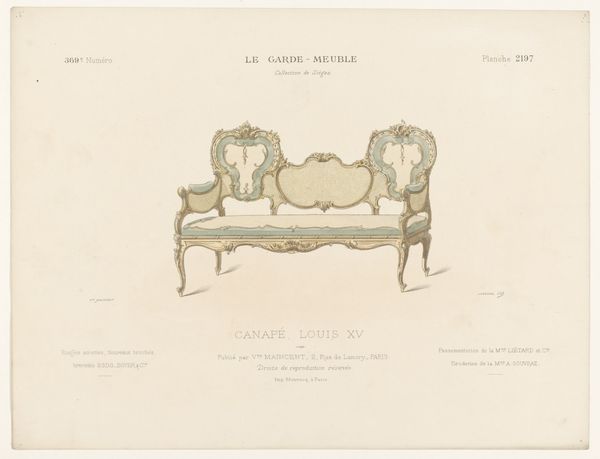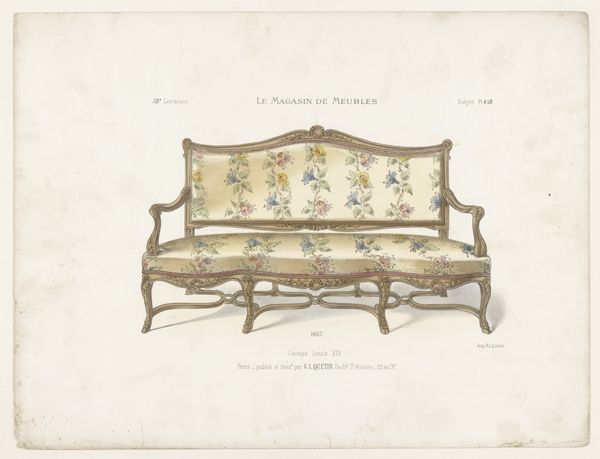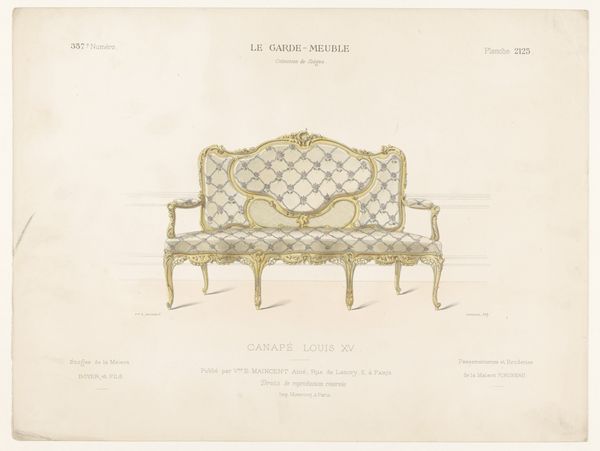
drawing, print, paper
#
drawing
# print
#
paper
#
form
#
line
#
watercolour illustration
#
academic-art
#
decorative-art
Dimensions: height 273 mm, width 360 mm
Copyright: Rijks Museum: Open Domain
Curator: Here we have a print titled "Canapé" dating roughly between 1895 and 1935. Editor: It’s delicate, isn’t it? A restrained use of color… It almost feels like a technical drawing rather than something purely decorative. Curator: It certainly bridges a gap. It's printed on paper and incorporates drawing techniques. Given the title mentions “Louis XV,” we’re likely looking at a historical record or an interpretation of a settee from that era, reproduced for a later audience. The very existence of 'Le Garde-Meuble' suggests an intent to document furniture designs and possibly offer them for reproduction. Editor: Exactly. Think of the labor involved – the artisanal skill in rendering such fine details for print reproduction. It speaks to a particular form of consumption. Someone, somewhere, would see this and aspire to have it replicated or perhaps commission something similar. This image is part of the chain of production. Curator: Precisely. And the publication details further contextualize its role in the design marketplace of the late 19th and early 20th centuries. These details offer valuable insights into the broader historical context. This was not just art, it was business. Editor: A business intertwined with cultural aspirations. That floral design is certainly not accidental; even then, the fabric and woodwork spoke to a social class and the culture it wanted to reflect, literally furnishing their space, and, more broadly, their image. Curator: An image carefully cultivated and meticulously reproduced. This piece is not only an aesthetic object, it embodies economic and social relationships of its time. Editor: A blueprint for both a canapé and a certain echelon of society. Curator: Quite. This work reminds us of the art and the object in service of cultural power. Editor: And it subtly unveils the production of desires and class aspiration, made through the very work of the draughtsman's labor.
Comments
No comments
Be the first to comment and join the conversation on the ultimate creative platform.
